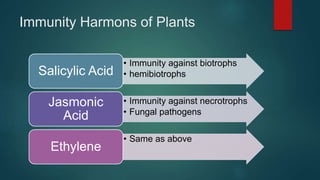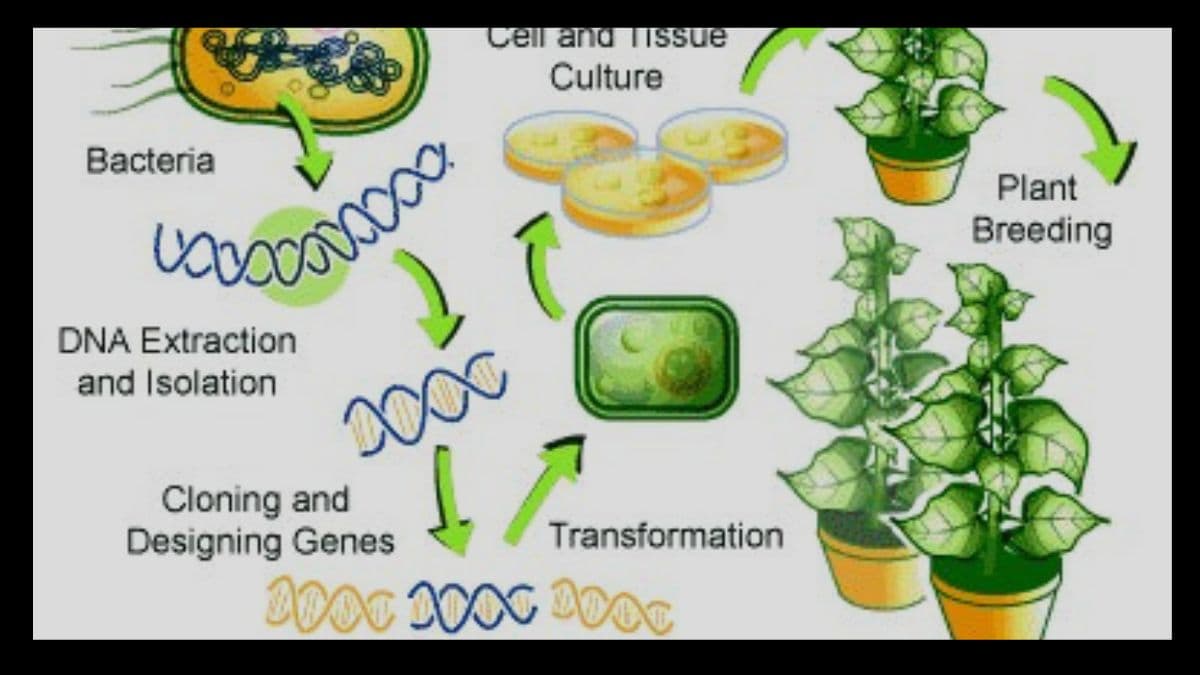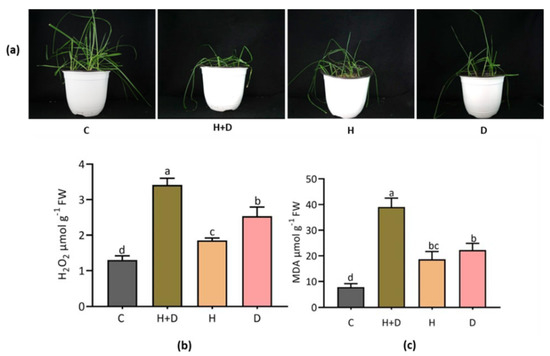
Decoding Plant Immunity: A Comprehensive Guide to Plant Defense Mechanisms
Plants, often perceived as passive organisms, are in reality engaged in a constant battle for survival against a myriad of pathogens, including bacteria, fungi, viruses, and oomycetes. Unlike animals with their mobile immune cells and adaptive antibody systems, plants have evolved sophisticated and intricate defense mechanisms rooted in their individual cells and systemic signaling pathways. Understanding these plant immune responses is crucial for developing sustainable agricultural practices, enhancing crop yields, and reducing reliance on chemical pesticides. This comprehensive guide delves into the multifaceted world of plant immunity, exploring its various components, signaling cascades, and applications in modern agriculture.
The Threat Landscape: Plant Pathogens and Their Strategies
Before diving into the intricacies of plant immunity, it’s essential to understand the diverse array of pathogens that threaten plant health. These pathogens employ a variety of strategies to invade and colonize plant tissues, causing diseases that can lead to significant economic losses. Let’s take a closer look at some major categories of plant pathogens:
- Bacteria: Bacteria like Pseudomonas syringae and Xanthomonas campestris inject effector proteins into plant cells to suppress immune responses and manipulate host metabolism.
- Fungi: Fungi, such as Magnaporthe oryzae (rice blast fungus) and Botrytis cinerea (gray mold), use enzymes to degrade plant cell walls and toxins to kill host cells.
- Viruses: Plant viruses, like Tobacco Mosaic Virus (TMV), hijack the plant’s cellular machinery to replicate themselves and spread throughout the plant.
- Oomycetes: Oomycetes, including Phytophthora infestans (late blight of potato), are fungal-like organisms that cause devastating diseases by secreting effectors and rapidly colonizing plant tissues.
These pathogens constantly evolve to overcome plant defenses, making the arms race between plants and pathogens a dynamic and ongoing process. Plants, in turn, have developed a complex arsenal of defense mechanisms to detect, respond to, and resist pathogen attacks.
Two Pillars of Plant Immunity: PTI and ETI
Plant immunity is broadly categorized into two main branches: Pattern-Triggered Immunity (PTI) and Effector-Triggered Immunity (ETI). These two layers of defense work synergistically to provide robust protection against a wide range of pathogens.
Pattern-Triggered Immunity (PTI): The First Line of Defense
PTI, also known as basal immunity, is activated when plants recognize conserved microbial molecules called Pathogen-Associated Molecular Patterns (PAMPs). These PAMPs, also sometimes called Microbe-Associated Molecular Patterns (MAMPs), are essential components of microbes that are easily recognized by plants. Examples of PAMPs include bacterial flagellin (a protein component of bacterial flagella), lipopolysaccharides (LPS) from bacterial cell walls, and fungal chitin. Plants detect these PAMPs using Pattern Recognition Receptors (PRRs) located on the cell surface. PRRs are typically receptor-like kinases (RLKs) or receptor-like proteins (RLPs). Upon PAMP recognition, PRRs trigger a signaling cascade that leads to a variety of defense responses, including:
- Production of Reactive Oxygen Species (ROS): ROS, such as hydrogen peroxide (H2O2), are toxic to both pathogens and plant cells. The rapid production of ROS, known as the oxidative burst, helps to kill pathogens and reinforce cell walls.
- Callose Deposition: Callose is a polysaccharide that is deposited at the site of infection to strengthen cell walls and prevent pathogen spread.
- Production of Antimicrobial Compounds: Plants synthesize a variety of antimicrobial compounds, such as phytoalexins and pathogenesis-related (PR) proteins, to directly inhibit pathogen growth.
- Activation of Mitogen-Activated Protein Kinase (MAPK) Cascades: MAPK cascades are signaling pathways that regulate gene expression and other cellular processes involved in defense.
PTI is a broad-spectrum defense mechanism that can provide resistance against a wide range of pathogens. However, successful pathogens can overcome PTI by delivering effector proteins into plant cells.
Effector-Triggered Immunity (ETI): A More Specific Defense
ETI is a more specific and powerful defense response that is triggered when plants recognize pathogen effector proteins. Effectors are molecules secreted by pathogens to suppress PTI or manipulate host cell processes to promote infection. Plants recognize effectors using intracellular immune receptors called Resistance (R) proteins. R proteins are typically nucleotide-binding leucine-rich repeat (NLR) proteins. Each R protein recognizes a specific effector, leading to a highly specific defense response.
When an R protein recognizes its corresponding effector, it triggers a strong defense response, often involving the Hypersensitive Response (HR). The HR is a localized programmed cell death at the site of infection, preventing the pathogen from spreading to other parts of the plant. ETI also activates other defense responses, such as the production of antimicrobial compounds and the systemic acquired resistance (SAR).
The interaction between R proteins and effectors follows the gene-for-gene model, where a specific R gene in the plant confers resistance to a pathogen carrying the corresponding avirulence (Avr) gene, which encodes the effector. This gene-for-gene interaction is a key driver of the co-evolutionary arms race between plants and pathogens.
Signaling Pathways in Plant Immunity: A Complex Network
The activation of PTI and ETI triggers complex signaling pathways that coordinate the plant’s defense responses. These signaling pathways involve a variety of signaling molecules, including:
- Calcium Ions (Ca2+): Ca2+ influx is an early event in plant immune signaling. Ca2+ signals can activate various downstream signaling pathways.
- Reactive Oxygen Species (ROS): ROS act as signaling molecules to activate defense genes and reinforce cell walls.
- Mitogen-Activated Protein Kinases (MAPKs): MAPK cascades are signaling modules that regulate gene expression and other cellular processes involved in defense.
- Phytohormones: Phytohormones, such as salicylic acid (SA), jasmonic acid (JA), and ethylene (ET), play crucial roles in regulating plant immune responses.
The Role of Phytohormones: Orchestrating Defense Responses
Phytohormones are key regulators of plant immunity, coordinating the plant’s defense responses to different types of pathogens. The major phytohormones involved in plant immunity include:
- Salicylic Acid (SA): SA is primarily involved in defense against biotrophic pathogens, such as bacteria and viruses, that require living host cells to survive. SA signaling activates the expression of PR genes and induces systemic acquired resistance (SAR).
- Jasmonic Acid (JA) and Ethylene (ET): JA and ET are primarily involved in defense against necrotrophic pathogens, such as fungi and oomycetes, that kill host cells to obtain nutrients. JA/ET signaling activates the expression of defense genes involved in wound healing, cell wall reinforcement, and the production of antimicrobial compounds.
The SA and JA/ET signaling pathways often interact antagonistically, allowing plants to fine-tune their defense responses to specific pathogens. This crosstalk between signaling pathways is crucial for optimizing plant immunity and minimizing the costs of defense.
Systemic Acquired Resistance (SAR): Long-Lasting Immunity
Systemic Acquired Resistance (SAR) is a form of induced resistance that provides long-lasting, broad-spectrum protection against a wide range of pathogens. SAR is activated in response to a localized infection and spreads systemically throughout the plant, providing enhanced resistance to subsequent infections.
SAR is triggered by the accumulation of SA at the site of infection. SA triggers the production of a mobile signal, which travels through the plant vasculature to distal tissues. The mobile signal activates the expression of PR genes in distal tissues, priming the plant for enhanced defense responses upon subsequent infection.
SAR is an important component of plant immunity, providing long-lasting protection against a wide range of pathogens. Understanding the mechanisms underlying SAR is crucial for developing strategies to enhance plant immunity and reduce disease incidence.
Induced Systemic Resistance (ISR): Harnessing Beneficial Microbes
In addition to SAR, plants can also acquire resistance through interactions with beneficial microbes, such as plant growth-promoting rhizobacteria (PGPR). This type of induced resistance is called Induced Systemic Resistance (ISR).
PGPR colonize plant roots and trigger systemic defense responses in the plant. ISR is typically mediated by JA and ET signaling pathways. PGPR can also produce antimicrobial compounds that directly inhibit pathogen growth.
ISR is an environmentally friendly approach to disease management, as it relies on beneficial microbes to enhance plant immunity. Understanding the mechanisms underlying ISR is crucial for developing sustainable agricultural practices that promote plant health and reduce reliance on chemical pesticides.
Plant Immunity in the Genomic Era: Unraveling the Complexity
The advent of genomics and other high-throughput technologies has revolutionized our understanding of plant immunity. Genome sequencing has allowed us to identify R genes and other defense-related genes in a wide range of plant species. Transcriptomics, proteomics, and metabolomics have provided insights into the complex signaling pathways and metabolic changes that occur during plant immune responses.
These genomic tools have also enabled us to study the evolution of plant immunity and the co-evolutionary arms race between plants and pathogens. By comparing the genomes of different plant species, we can identify genes that have been under selection pressure due to pathogen attack. By studying the genomes of different pathogen strains, we can identify effectors that have evolved to overcome plant defenses.
The genomic era has provided us with a wealth of information about plant immunity, paving the way for the development of new strategies to enhance plant resistance and reduce disease incidence.
Engineering Plant Immunity: Towards Disease-Resistant Crops
Understanding plant immune responses is crucial for developing disease-resistant crops. Traditional breeding methods have been used for centuries to improve plant resistance to disease. However, these methods can be time-consuming and labor-intensive. Modern biotechnology offers new tools for engineering plant immunity, including:
- Gene Pyramiding: Gene pyramiding involves stacking multiple R genes into a single plant to provide broad-spectrum and durable resistance. This approach can overcome the problem of pathogen adaptation to single R genes.
- Genome Editing: Genome editing technologies, such as CRISPR-Cas9, allow us to precisely modify plant genes to enhance resistance to disease. This approach can be used to create novel R genes or to modify existing genes to improve their function.
- Effector-Triggered Immunity Engineering: This approach involves engineering plants to express R proteins that recognize effectors from a wide range of pathogens. This can provide broad-spectrum resistance to multiple diseases.
These biotechnological approaches offer great promise for developing disease-resistant crops that can reduce reliance on chemical pesticides and improve crop yields.
The Future of Plant Immunity Research: Challenges and Opportunities
Plant immunity research is a rapidly evolving field with many exciting challenges and opportunities. Some of the key areas of focus for future research include:
- Understanding the mechanisms underlying systemic acquired resistance (SAR) and induced systemic resistance (ISR). Identifying the mobile signals that trigger SAR and ISR is crucial for developing strategies to enhance plant immunity.
- Investigating the role of the plant microbiome in plant immunity. The plant microbiome plays a crucial role in plant health and disease resistance. Understanding the interactions between plants and their microbiome is crucial for developing sustainable agricultural practices.
- Developing new strategies to engineer plant immunity. Genome editing and other biotechnological approaches offer great promise for developing disease-resistant crops.
- Studying the evolution of plant immunity and the co-evolutionary arms race between plants and pathogens. Understanding the mechanisms by which pathogens overcome plant defenses is crucial for developing durable resistance strategies.
By addressing these challenges and capitalizing on these opportunities, we can develop new strategies to enhance plant immunity, reduce disease incidence, and improve crop yields. This will be crucial for ensuring food security in a world facing increasing environmental challenges.
Conclusion: Plant Immunity as a Cornerstone of Sustainable Agriculture
Plant immune responses are complex and dynamic, representing a crucial battleground in the ongoing struggle for survival in the natural world. From the initial recognition of PAMPs via PTI to the highly specific effector recognition of ETI, plants possess a sophisticated arsenal of defense mechanisms. These mechanisms are orchestrated by intricate signaling pathways involving phytohormones like salicylic acid, jasmonic acid, and ethylene, allowing plants to fine-tune their responses to diverse threats.
Understanding these plant immune responses is not merely an academic exercise; it is a critical necessity for developing sustainable agricultural practices. By harnessing the power of plant immunity, we can create crops that are more resilient to disease, reducing our reliance on harmful chemical pesticides and promoting environmentally friendly farming methods. Furthermore, advancements in genomic technologies and biotechnological approaches like gene pyramiding and genome editing offer unprecedented opportunities to engineer plant immunity, creating disease-resistant crops that can thrive in the face of evolving pathogens.
The future of agriculture hinges on our ability to unlock the full potential of plant immunity. By investing in research, fostering collaboration, and embracing innovative technologies, we can pave the way for a more sustainable and secure food supply for generations to come. The journey to fully understand and utilize plant immunity is a complex one, but the rewards – healthier plants, reduced pesticide use, and a more sustainable agricultural system – are well worth the effort. Let us continue to explore the fascinating world of plant defense mechanisms and work towards a future where plants are equipped to defend themselves against the ever-present threat of disease.

